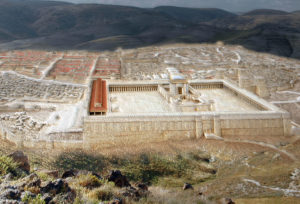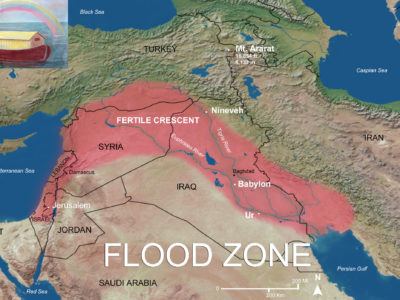“I am about to cover the earth with a flood that will destroy every living thing that breathes.” God to Noah, Genesis 6:17
EARTH BECAME WATERWORLD, as the Bible tells it.
Anything that breathed got buried at sea—except those lucky enough to be sailing in Noah’s floodbuster:
- Noah’s extended family
- pairs of animals
These humans and critters were intended to reboot life on earth.
Humanity’s clock had run to 1,656 years. That’s if Adam’s family tree in Genesis 5 included all the men. Many scholars say it included just the notables. If so, humanity could have been eons old by the time God decided on a creation do-over.
The problem was sin. “God saw that human evil was out of control. People thought evil, imagined evil…from morning to night” (Genesis 6:5 The Message).
The solution was Noah. “Noah was different. . . . a good man, a man of integrity” (Genesis 6:8-9 The Message).
God decided to wash the sin away. He’d kill everyone but Noah and his family of three married sons. They would survive on a huge boat they had to build.
Floodwater swallowed the land with pummeling rain and erupting groundwater. It lasted 40 days, a common Bible measurement that some scholars say simply means a long time.
By the time the rain stopped, “water covered even the highest mountains on the earth” (Genesis 7:19).
For five months Noah’s floodbuster floated, until it came to a grinding halt “somewhere in the Ararat mountains” (Genesis 8:4 CEV).
It took another seven months for the floodwater to recede enough that it was safe to disembark and begin rebuilding their lives. That means the Flood Cruise lasted a year.
Worldwide flood vs. regional flood
Many Christians who say the earth is just a few thousand years old insist that the flood:
- covered the world as we know it
- gave the earth a sudden facelift: mountains shoved up, valleys carved low
They argue that the Bible says God covered even the highest mountains.
Other Christians say the flood probably affected only the world as the ancients knew it: the Fertile Crescent, where civilization began along the Tigris and Euphrates Rivers in what is now Iraq.
Defending this position, scholars say archaeologists and geologists have found evidence of devastating regional floods in the Tigris and Euphrates river valley, but no evidence of a worldwide flood.
Other flood stories
Some 70 cultures around the world have ancient flood stories, from the Middle East to the South Pacific. Some sound remarkably close to the Bible flood.
Take the Epic of Gilgamesh, for example. It’s an ancient Iraqi (Babylonian) story about a king named Gilgamesh, thought to have lived in the 2000’s BC. That’s many centuries before Moses, whom Jewish tradition credits with writing the Genesis flood story.
In the Iraqi flood story, a man survived a flood by building a boat for his family and for some animals. Like Noah, he released a dove after the flood to see if it would find a place to land. The dove didn’t, and it came back to the boat just as the dove did in Noah’s story.
Clearly, some Bible students say, there was once a whopper of a flood that made a whopper of an impression.
Good news from God. After the flood, he filled the sky with a rainbow and vowed “Floods will never again destroy all life on the earth” (Genesis 9:15 NCV).
Excerpt from the newly released book Stephen M. Miller’s Illustrated Bible Dictionary.
For info about Steve’s 100-book giveaway—which is going on this week only—see his latest newsletter.


Whoa! I’d love the Bible Dictionary.
Is it not odd, that no one else in the region had a boat and survived?
Yep. But if you take the story literally, the world was underwater for much of a year and the water rose above the highest mountains, which is about the flight line of a Boeing 747 with oxygen on board. Noah, with the livestock, made do with methane.